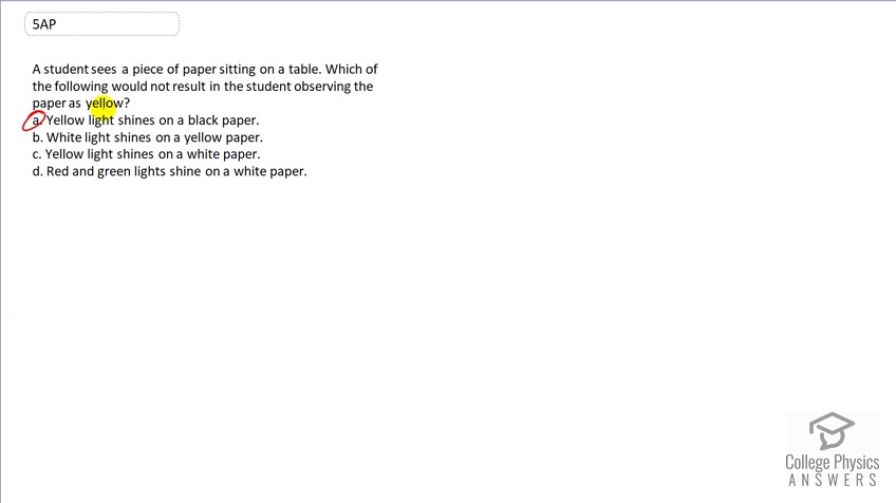Question
A student sees a piece of paper sitting on a tablWhich of the following would not result in the student observing the paper as yellow?
- Yellow light shines on a black paper.
- White light shines on a yellow paper.
- Yellow light shines on a white paper.
- Red and green lights shine on a white paper.
Final Answer
(a)
Solution video
OpenStax College Physics for AP® Courses, Chapter 26, Problem 5 (Test Prep for AP® Courses)

vote with a rating of
votes with an average rating of
.
Video Transcript
This is College Physics Answers with Shaun Dychko. A student sees a piece of paper sitting on a table. And, which of the following would not result in the student observing the paper as being yellow. The answer is A, but let's talk about all the other options to see why they would see yellow in those cases. So, in part B, if white light shines on yellow paper, then it's going to look yellow. And, this is the usual scenario when there's a piece of yellow paper on the table and typically your room is illuminated with white light, it's going to look yellow. So, there's nothing special about that option. Part C. If yellow light shines on white paper, then sure, you're going to see the reflection of yellow light from the white paper. And so, C, yes. The paper will appear to be yellow. Now D is a bit tricky. If you have red and green light shining on white paper, both the red and the green will be reflected and what you'll end up seeing is yellow because red and green, when the color combination is additive, red and green make yellow. So, on your computer screen, for example, you have red, green, and blue pixels on the screen and only those three. But, you can see it as color yellow of course, and here it is. By having some yellow, what your screen is doing is turning on adjacent red and green pixels that are so close together they appear to be on top of each other and add and they make the color yellow. And so, this color addition works differently than when you're painting because when you are painting, your color addition is subtractor, so the rules are different. So, part D is going to show yellow paper. So, the only option then is A. When yellow light shines on black paper, it will not appear yellow because black means the paper absorbs all the different colors, and so the yellow light will be absorbed.